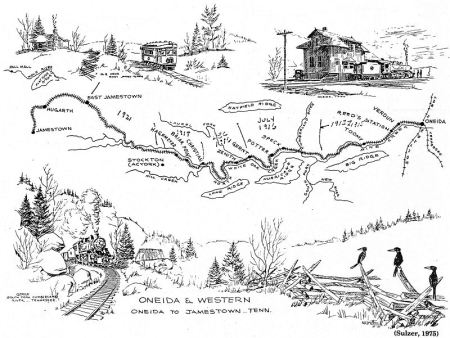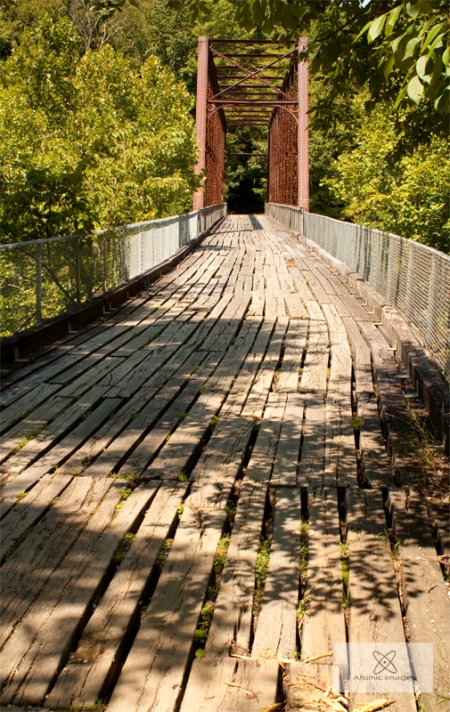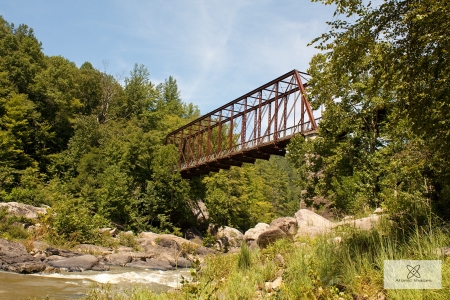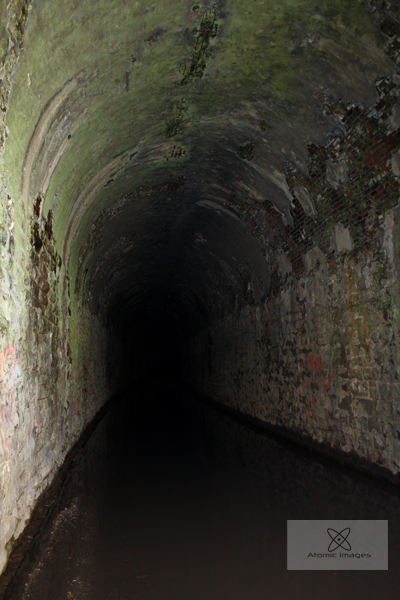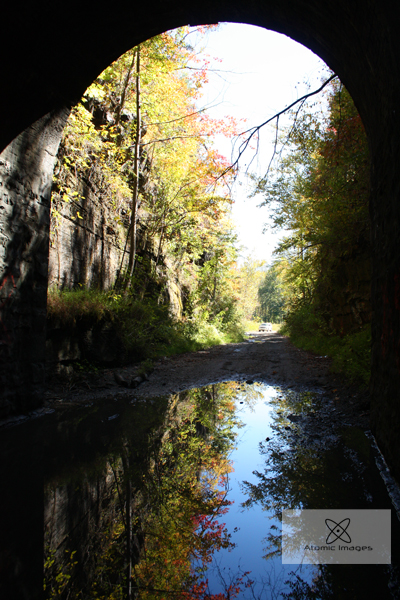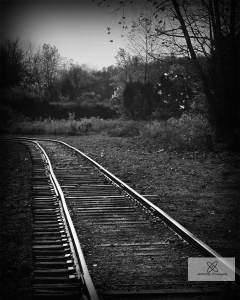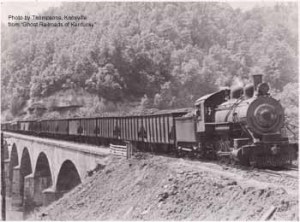Overview
Nuttalburg is a recent addition to the list of industrial sites that have been preserved by the National Park Service. There are countless sites that lie throughout the country on public land in various states of decay. Occasionally, places of historical significance are preserved for future generations to enjoy as a window into the past. Not too many years ago the coal tipple at Nuttallburg (used to load railcars) and its long conveyor structure stood silent and overgrown in the woods awaiting an eventual collapse from exposure to the elements, but thanks to an infusion of money and work from the park service it is now stabilized. The multi-year project wrapped up in 2011 and included stabilizing the tipple structure as well as clearing vegetation. The site was cataloged in 2005 and is listed on the National Register of Historic places; the park service states that it may be one of the most complete coal related industrial sites left in the United States. To appreciate the work that went into the project here is a photo of the tipple in its previous state.

Tipple structure was in great disrepair before being stabilized. Photo sourced from McMullan & Associates, Inc. , a structural engineering firm involved in the stabilization effort.
Early History
During the lifetime of the operation at Nuttallburg it had been operated by several different entities including Henry Ford’s Fordson Coal Company. The story of the complex begins way back in 1870, though, when an English-born man named John Nuttall saw opportunity in the deep New River Gorge area of West Virginia. He knew a new railroad was coming to the area and he also new coal was in the ground ready for the taking. He began to buy up land in the area around the Keeney’s Creek drainage and when the Chesapeake & Ohio Railway (then under construction) reached the town it was ready to go. Nuttallburg became the second mining camp in the gorge to ship the area’s unique grade of “smokeless” coal in 1873. Business at the time was booming in the New River Gorge, around 50 separate mine towns and camps existed along both sides of the river pulling out the coal as fast as possible and feeding the northern industrial cities. John Nuttall passed away in 1893 but his town certainly did not die with him, the ownership passed to his heirs and the town continued to boom. Below is a comparison look at the tipple in it’s heyday as well as the current view.

My modern day take on the same image. Alas, the roar of the tipple and the coal cars have long faded into history.
The Ford Era
In the year 1920 the Nuttallburg operation was leased and operated by none other than Henry Ford under the Fordson Coal Company. He had already revolutionized the automotive industry and was now out to apply his ideals to the bigger picture. The big idea in manufacturing in that day was the practice of “vertical integration,” a fancy term that basically means controlling the supply chain. To build Fords he had to have steel, lots of steel, and to make steel you had to have coal. Ford had already purchased steel mills to control his supply of metal to fabricate into cars, so his next logical step was to control the raw materials used in the steel making process. The purchase of Nuttallburg was really an experiment that lasted for eight years, and failed. A large amount of money was sunk into the mines to bring them up to “modern standards” of the day as well as the construction of the button conveyor system and the tipple that stands today. What can be seen when visiting the site is basically Ford’s legacy, with the exception of the coke ovens, which predated Ford’s leasing of the mines. They ceased operations in 1920 when Ford took over.
The failure came because of a force that could not be controlled by Ford, the railroad. He could not control it nor could he afford to buy it so it became a variable out of his control. Rail car shortages were rampant in the gorge with so many mines putting out coal there just wasn’t enough to go around and this frequently caused mine shutdowns. Also, an oppressive amount of interchange regulations made shipping coal the long distance to Dearborn, MI a nightmare. After eight years Ford gave up the experiment and sold off the mines to the New River Mining Company, but left the facilities in much better shape than they found them. Production was greatly increased due to the modernization of the processes.
Post-Ford Nuttallburg
New River Mining renamed the mine Dubree #4 and operated it successfully until 1953. They sold off the facility to the Margie Coal Co. who quickly passed it off to Garnet Coal Co. who operated for four years but then shut down the mine for good in 1958 marking the end of Nuttallburg’s operational lifespan. There is a fair amount to see at the site, mostly remnants of the Ford era and beyond including the tipple and conveyor system, coke ovens (pre-Ford), overgrown railyard, lots of structure foundations and remnants, and the remains of a suspension bridge that once spanned the river.

As a reminder of how nature can reclaim, this spaghetti bowl of rails used to be part of the tipple rail yard. Now trees thrive where coal cars used to be shuffled.
As a side note there is another piece to the operation up the hill I didn’t have time to visit that consists of the head house and mine portal itself. This is the top end of the conveyor system and is accessed at a different point than the Nuttallburg site itself. If you have info or images of the “top end” please contact me and I will add them to the post with credit to you. The site is preserved as it is today because the family of John Nuttall gave the site to the National Park Service in 1998. The site was thoroughly cataloged for inclusion in the National Register of Historic Places in 2005 with restoration concluding in 2011.
How to Get There
Directions taken from the NPS website:
From Canyon Rim Visitor Center, go north on US 19 0.3 miles to the next intersection, and turn right onto Lansing-Edmond Road (County Route 5/82). Follow Lansing-Edmond Road (becomes CR 82) 6.0 miles to Winona. Turn right onto Keeney’s Creek Road (CR 85/2), continue past the houses (do not cross the creek) and the road turns to gravel. Travel 4.1 miles to the main Nuttallburg parking area and restroom. Parking for disabled visitors is located an additional 0.1 miles beyond the main parking area, closer to the tipple.
Winona can also be reached from the Canyon Rim Visitor Center by traveling north on US 19 to Hico 5.0 miles. Go east on US 60 (Midland Trail) 4.4 miles to Lookout, turn right onto Lansing-Edmond Road (CR 82) and go 2.1 miles to Winona, then follow the directions above for Keeney’s Creek Road (CR 85/2).
Headhouse access:
The easiest way to the headhouse area of Nuttallburg is located off Beauty Mountain Road near Lansing. From U.S. 19, take Lansing-Edmond Road (CR 5 becomes CR 82) 2.5 miles and turn right onto Beauty Mountain Road (CR 85/5). Travel 0.1 miles, then turn right onto the road just beyond Nuttall Cemetery Road. A parking area is located before the gated service road. Hike down the Headhouse Trail 0.5 miles to the headhouse area of Nuttallburg. Caution: this hike is steep and strenuous.
A Random Find
So, driving back out of Nuttallburg at the end of the excursion down the narrow, one lane gravel road I happened to look off down beside the road and saw a bridge hiding in the woods. It was cloaked in green, almost like camouflage, but I knew I had to get to it. It was covered in moss like some kind of ancient relic and I knew it had to be a piece of the infamous C&O Keeney’s Creek Branch.
After a short walk back down the road and over into the former roadbed I arrived at the end of the bridge. It was even prettier up close than it was from far away. I just can’t get over how green the scene was. Oddly, the outer rails (the ones the trains run on) have been removed but the inner rails (known as guard rails) were left intact. This puzzled me at the time, but today I saw a photograph of a car driving on one of the former Keeney’s Creek Br. bridges and I realized the outer rails were removed to facilitate automobile traffic at one time. Apparently, the railroad bed was the only way to reach this part of the gorge so once the branch shut down it became a road utilizing the existing bridges…mystery solved.
Nuttallburg is a gem of history thanks to the preservation efforts of the NPS and the gift of the site by the Nuttall family. The drive down into the gorge gets a bit long, but it is worth it in the end. If you find yourself at the northern end of the New River Gorge check it out!
Links of Interest
NPS Nuttallburg Brochure (PDF)
Coal Camp USA page on Nuttallburg (including mine photos)






